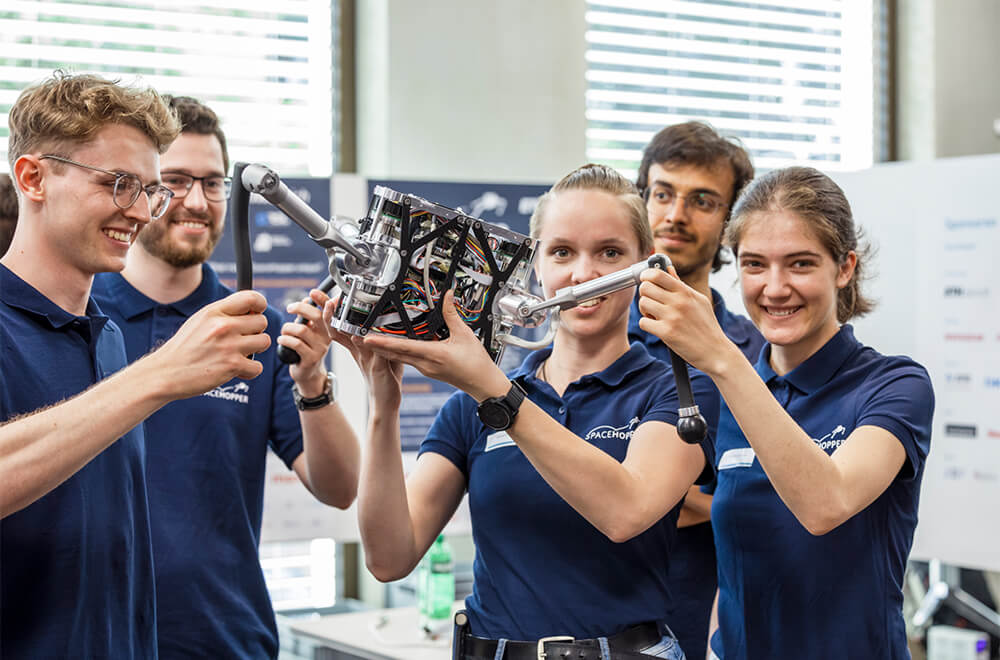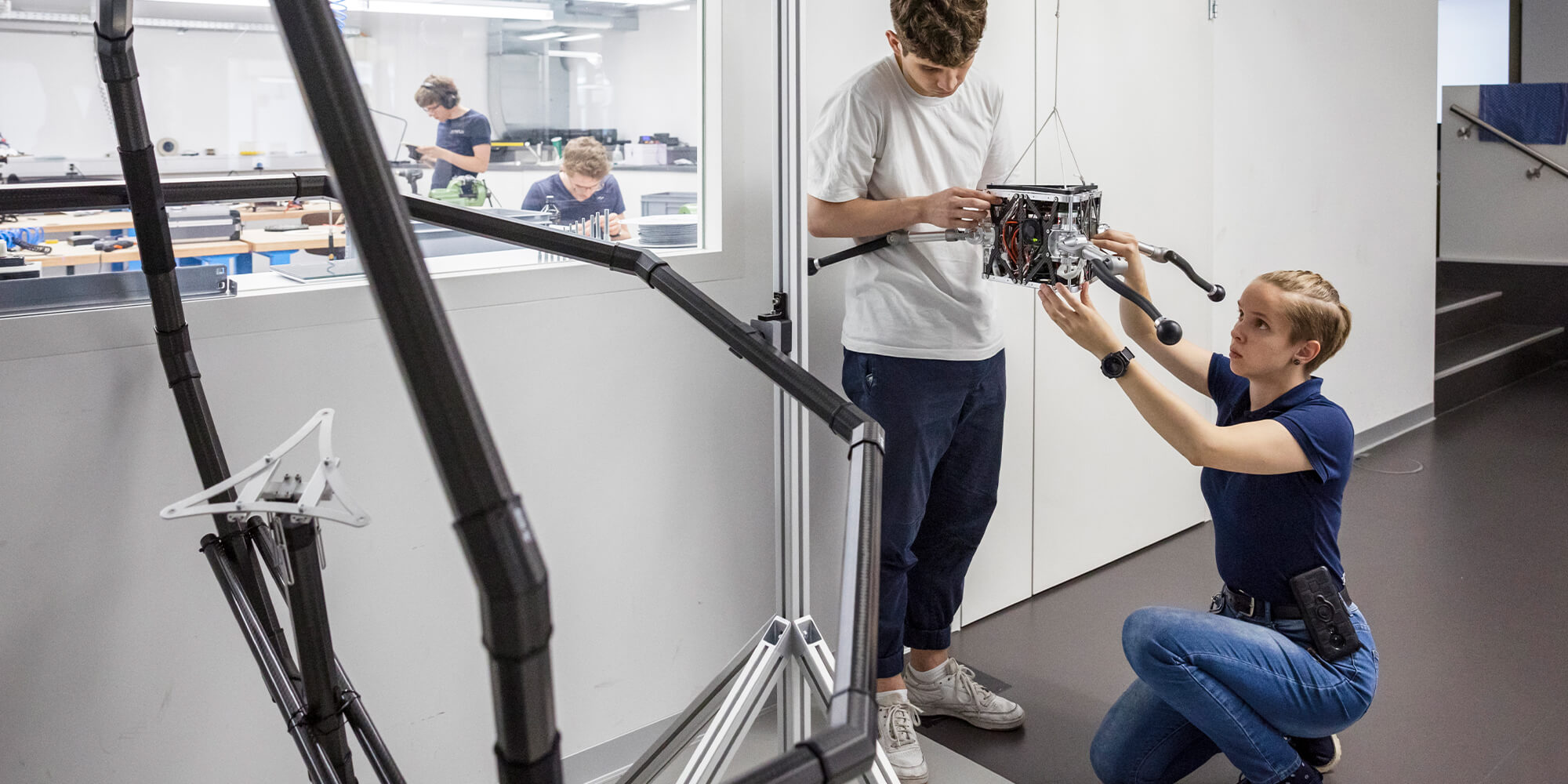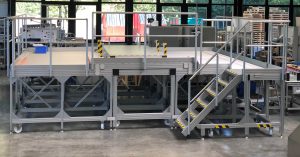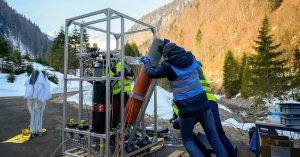Have you ever wondered what it would be like to live on a different planet? Or whether there are resources on other planets that could be used on Earth?
If you have, you’re certainly not alone – people have long since been fascinated by these questions. Technical innovation is the key here. Creativity and a passion for invention repeatedly give rise to new solutions that provide answers. However, whether on a mission in space or working on a test structure, the demands on the materials involved are massive. Time and again, people turn to our profile technology to give them a helping hand in this area – after all, it boasts outstanding stability, low weight and end-to-end flexibility. We’ve already highlighted several space projects on our item blog. For example, we have previously reported on the JUICE Jupiter space probe and two student projects conducted at ETH Zurich – a hybrid rocket for zero-gravity experiments and the CHIRON robot. ETH Zurich – the highest-ranked university in mainland Europe – drives forward innovation. The SpaceHopper robot is another such innovation and has been specially developed for exploring celestial bodies that have low gravitational force. When it came to designing two test structures, the students opted to use our aluminium profiles from the item Building Kit System.
Student project – developing a new way of moving around on asteroids
SpaceHopper is a focus project at ETH Zurich – in other words, a project that is completed in the last two semesters of a bachelor’s degree programme. These projects give students the opportunity to apply their theoretical knowledge in practice and gain valuable experience in preparation for the professional world. They also frequently provide the basis for final dissertations. The ten students in the SpaceHopper team also received support at the university from the renowned Robotic Systems Lab. Although the focus on low gravitational force was specified for them, the students were free to choose the aim for their mission – and they deliberately sought out the biggest challenge of all.
The team broke new ground and developed the SpaceHopper – a space robot that moves around by jumping.
“Gravitational force on the moon, for example, is one sixth as strong as gravitational force on Earth. However, we were aiming at celestial bodies where the gravitational force is much lower still – in other words, asteroids. Our primary target is the asteroid Ceres. The gravitational force on Ceres is around three percent of Earth’s gravity,” says Elena Krasnova. Although she has already graduated from ETH Zurich, she is continuing to work on the project with other team members in her spare time. There’s another incentive, too. Very little research has been conducted into asteroids because of their gravitational force. Ceres, in particular, really doesn’t make research easy. Wheels? With this level of gravitational force, they would move neither forwards nor backwards. Flying, then? Unfortunately, the lack of atmosphere means this isn’t an option either. The team therefore broke new ground and developed the SpaceHopper – a robot that travels by jumping. This means it can easily be used on asteroids to take measurements or collect samples.
What cats can do, the SpaceHopper does even better
The SpaceHopper has three legs that combine stability and efficiency. The robot has a total weight of just 5 kg. Each leg weighs 1 kg and is driven by three motors – two in the robot’s body, and one in the upper part of the leg. When the space robot needs to hop, a differential gear in the SpaceHopper’s hip comes into play. Thanks to the combined power of all the motors in the robot’s body, the SpaceHopper could jump to a height of six metres on the asteroid Ceres. Does that remind you of anything? It’s no coincidence that its agility is rather like that of a cat. After all, cats jump through the air and twist their bodies as they fall to ensure they land on all four paws. The SpaceHopper, which is roughly the same size as a cat, “imitates” this movement. It uses the weight and imbalance of its legs so skilfully that it always lands on its feet.
When using the test structure based on item products, the robot jumps to a height of just under 70 cm. Although this may not sound particularly impressive, it is the equivalent of 5 to 6 m on Ceres.
Manually programming the robot to make these movements would be too complex a process, so the SpaceHopper is controlled by an artificial intelligence (AI) system. The AI system learns, in a simulated environment, how the robot should best move its legs to achieve a soft landing. But how can you simulate the conditions on Ceres in tests carried out on Earth? Enter the item Building Kit System. Our aluminium profiles are used in a T-shaped construction. “A rope is looped over rollers at the top. You can then suspend a 4 kg weight on one side and attach the robot on the other side. Thanks to the counterweight, the robot can jump to a height of just under 70 cm,” Krasnova explains. Without the test structure based on item products, the robot would only be able to stand upright, despite its motors. Although 70 cm may not sound particularly impressive, it is the equivalent of 5 to 6 m on Ceres.
item profile technology – a strong basis for highly informative experiments
Another test structure is used to simulate the space robot’s flight phase, allowing it to rotate freely in all three dimensions. This structure has been nicknamed “Gimbal”, since it was inspired by the mount for cameras that goes by the same name. Think of it this way – the SpaceHopper is in the middle of the construction, which consists of three nested frames. This means you can test how the robot needs to “waggle” its leg so that it can flip itself over for the landing. Experiments of this nature provide important information for the team’s research and development work. Since the two inner frames need to be particularly lightweight, they are made of carbon. The outer frame needs to support the entire construction and stabilise the inner frames.
We frequently had to dismantle the equipment and then put it back together again. The fact you can more or less fasten together an entire frame with six screws was a real help.
For this challenge, too, our profile technology was ideal. “The straightforward fastening techniques are fantastic. We demonstrated the equipment at many different trade fairs and exhibitions, so we frequently had to dismantle it and then put it back together again. The fact you can more or less fasten together an entire frame with six screws was a real help,” says Krasnova. To make the solution more compact, the SpaceHopper team later had to combine the two test structures. However, thanks to the modularity of our profiles, this didn’t take long at all. Krasnova highlights another benefit, too. “The quick-action fixings were ideal, because they enabled us to adjust the height or change the length of the profiles really quickly. That meant we could try out anything and everything.” The team was therefore able to create the optimal conditions for the SpaceHopper’s next steps or jumps. What’s more, the team will soon have the amazing opportunity to test the space robot under zero-gravity conditions in three parabolic flights. We’re delighted to be playing a part in the team’s success and are keeping our fingers crossed for them!

Do you want to keep up to date on the various ways that item products are being put to use? Then we have just what you’re looking for! Simply subscribe to the item blog by completing the box at the top right.





